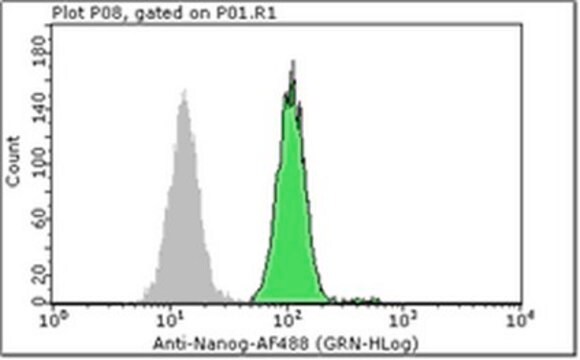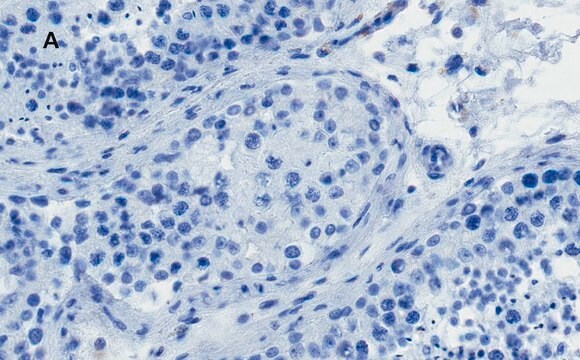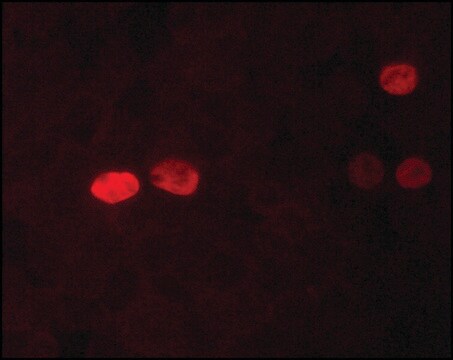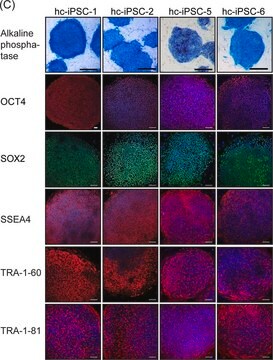推荐产品
生物源
mouse
品質等級
共軛
ALEXA FLUOR™ 488
抗體表格
purified immunoglobulin
抗體產品種類
primary antibodies
無性繁殖
7F7.1, monoclonal
物種活性
human
技術
immunocytochemistry: suitable
同型
IgG2a
NCBI登錄號
UniProt登錄號
運輸包裝
wet ice
目標翻譯後修改
unmodified
基因資訊
human ... NANOG(79923)
一般說明
NANOG (Homeobox protein NANOG) is a member of the Nanog homeobox family of DNA-binding proteins. It is expressed in embryonic stem cells and confers pluripotency on these cells. Once embryonic stem cells become differentiated, NANOG expression is suppressed. NANOG is involved in the Hedgehog/Gli1 signaling pathway which has been implicated in the development and growth of various types of tumors. NANOG has also been identified as a key transcription factor used to generate induced pluripotent stem cells.
應用
Anti-NANOG Antibody, clone 7F7.1, Alexa Fluor 488 conjugate.
品質
Evaluated by Immunocytochemistry in H9 human embryonic stem cells. Immunocytochemsitry Analysis: A 1:100 dilution of this antibody detected NANOG in H9 human embryonic stem cells.
標靶描述
The uncojugated parent antibody (Catalog No. MABD24) has an observed MW of 39 kDa
外觀
Purified mouse monoclonal IgG2a conjugated to Alexa Fluor™ 488 in PBS with 0.1% sodium azide and 15mg/ml BSA.
其他說明
Concentration: Please refer to the Certificate of Analysis for the lot-specific concentration.
法律資訊
ALEXA FLUOR is a trademark of Life Technologies
未找到合适的产品?
试试我们的产品选型工具.
儲存類別代碼
12 - Non Combustible Liquids
水污染物質分類(WGK)
WGK 2
閃點(°F)
Not applicable
閃點(°C)
Not applicable
Breanna S Borys et al.
Stem cell research & therapy, 12(1), 55-55 (2021-01-14)
Human induced pluripotent stem cells (hiPSCs) hold enormous promise in accelerating breakthroughs in understanding human development, drug screening, disease modeling, and cell and gene therapies. Their potential, however, has been bottlenecked in a mostly laboratory setting due to bioprocess challenges
Quan Qi et al.
International journal of molecular medicine, 35(3), 569-578 (2014-12-20)
The present study aimed to investigate the X chromosome inactivation (XCI) status in long-term cultured human parthenogenetic embryonic stem cells. One human embryonic stem (hES) cell line and 2 human parthenogenetic embryonic stem (hPES) cell lines were subjected to long-term
Melissa Conti Mazza et al.
Stem cell research, 55, 102506-102506 (2021-08-23)
Mutations in the oncogene PARK7, which codes for DJ-1, have been associated with early-onset autosomal recessive Parkinson's disease (PD); however, the exact role of DJ-1 in PD remains elusive. Fibroblasts from a PD patient with a uniparental disomy, 1 bp deletion
Vanessa Sauer et al.
Cell transplantation, 25(12), 2221-2243 (2016-08-12)
Although several types of somatic cells have been reprogrammed into induced pluripotent stem cells (iPSCs) and then differentiated to hepatocyte-like cells (iHeps), the method for generating such cells from renal tubular epithelial cells shed in human urine and transplanting them
Daniel Rodrigo Marinowic et al.
Molecular medicine reports, 15(4), 2049-2056 (2017-03-06)
Focal cortical dysplasia (FCD) is caused by numerous alterations, which can be divided into abnormalities of the cortical architecture and cytological variations; however, the exact etiology of FCD remains unknown. The generation of induced pluripotent stem cells (iPSCs) from the
我们的科学家团队拥有各种研究领域经验,包括生命科学、材料科学、化学合成、色谱、分析及许多其他领域.
联系技术服务部门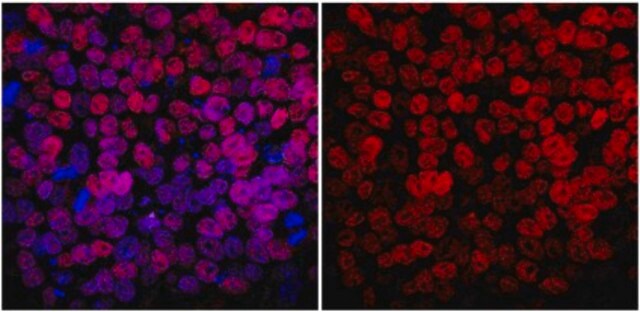
![Anti-OCT-4 [POU5F1] Antibody, clone 7F9.2 clone 7F9.2, from mouse](/deepweb/assets/sigmaaldrich/product/images/307/874/7354f72d-80ee-40a5-b7fa-0590fe6784cc/640/7354f72d-80ee-40a5-b7fa-0590fe6784cc.jpg)
